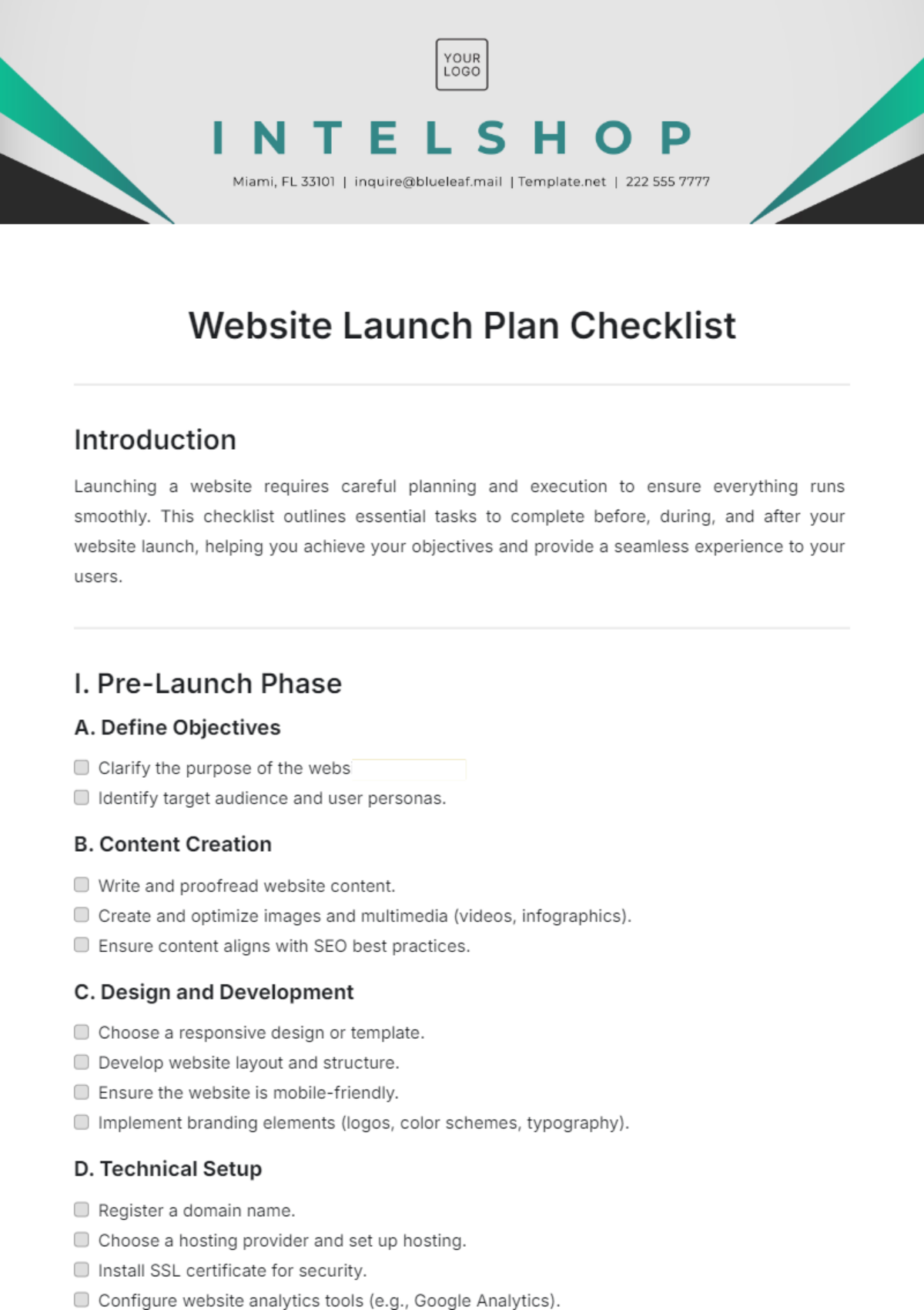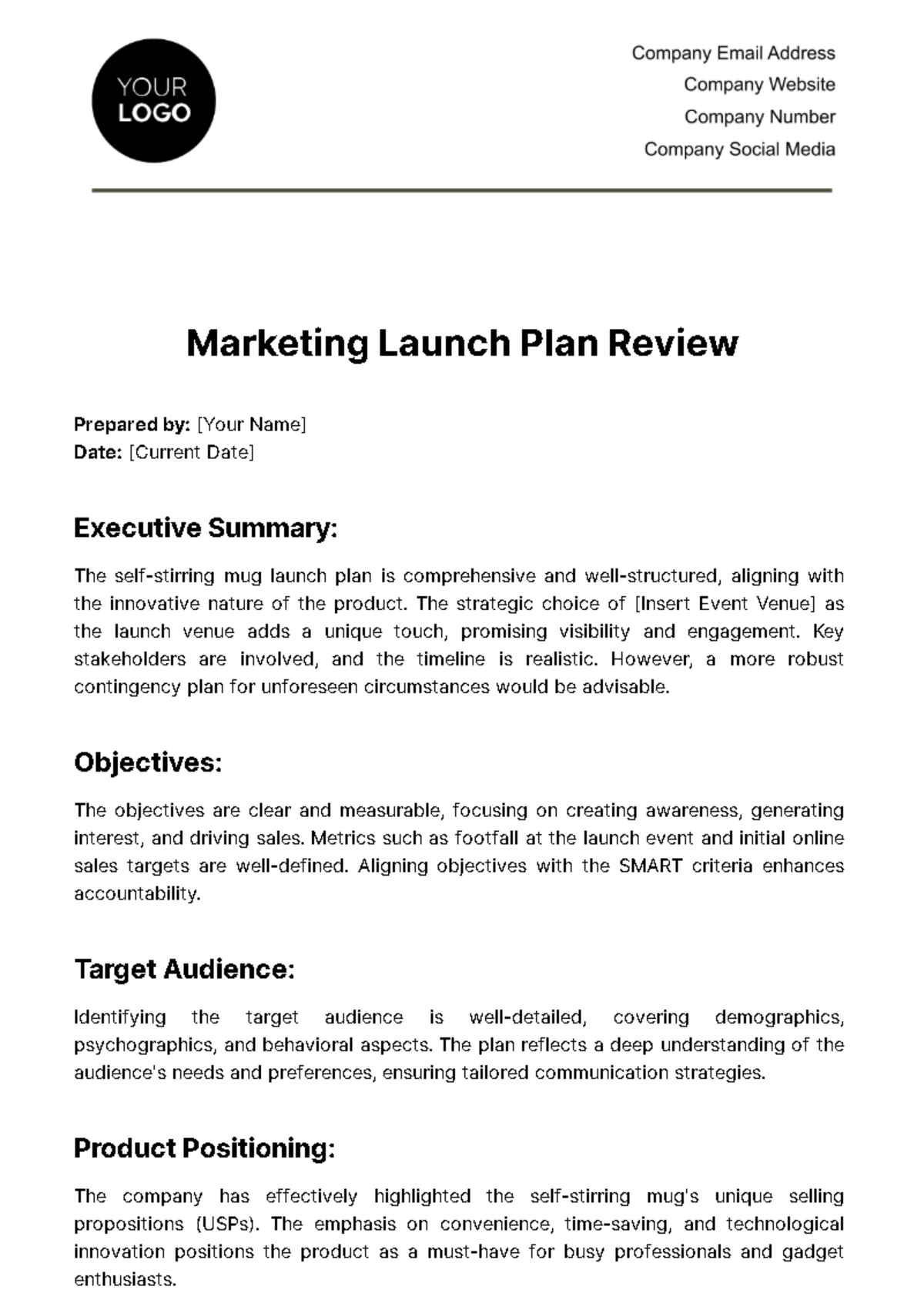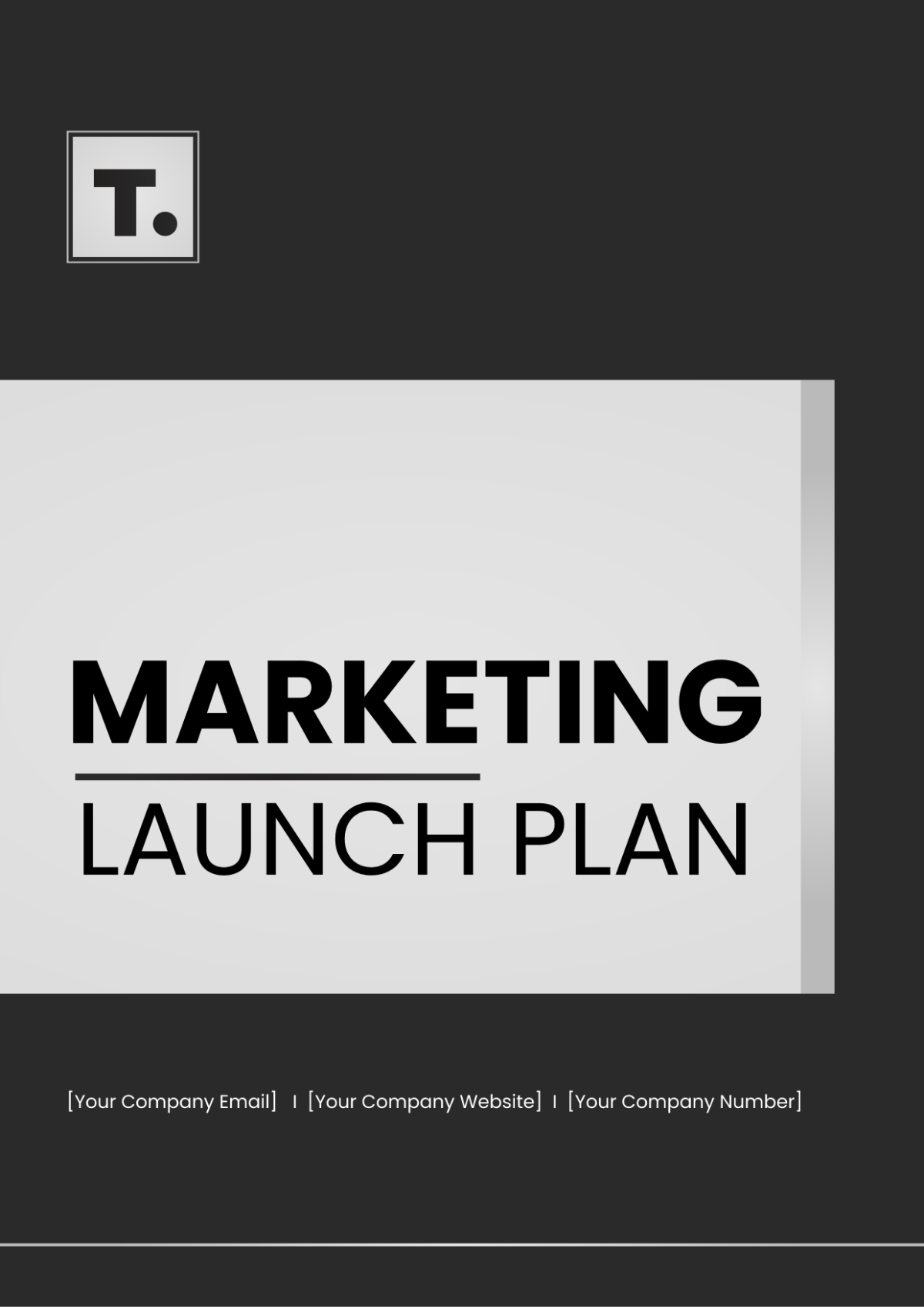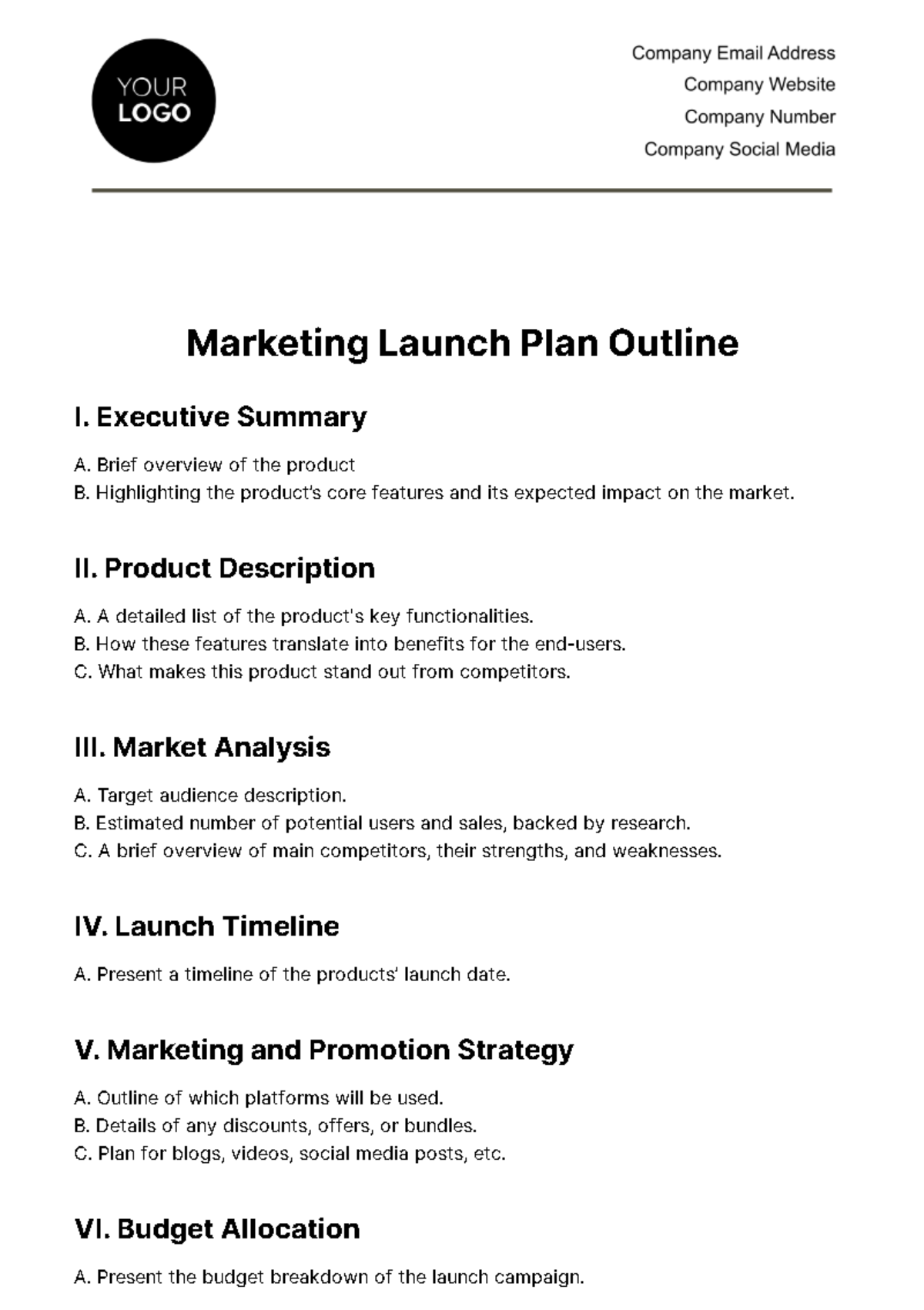Website Launch Plan Checklist
Introduction
Launching a website requires careful planning and execution to ensure everything runs smoothly. This checklist outlines essential tasks to complete before, during, and after your website launch, helping you achieve your objectives and provide a seamless experience to your users.
I. Pre-Launch Phase
A. Define Objectives
Clarify the purpose of the website.
Identify target audience and user personas.
B. Content Creation
Write and proofread website content.
Create and optimize images and multimedia (videos, infographics).
Ensure content aligns with SEO best practices.
C. Design and Development
Choose a responsive design or template.
Develop website layout and structure.
Ensure the website is mobile-friendly.
Implement branding elements (logos, color schemes, typography).
D. Technical Setup
Register a domain name.
Choose a hosting provider and set up hosting.
Install SSL certificate for security.
Configure website analytics tools (e.g., Google Analytics).
E. Functionality Testing
Test all links and buttons.
Ensure forms and CTAs are functioning properly.
Verify that e-commerce functionalities (if applicable) work.
Test for browser compatibility (Chrome, Firefox, Safari, etc.).
F. SEO Optimization
Create and submit a sitemap to search engines.
Implement meta tags, headings, and alt text.
Optimize page load speed.
Ensure the URL structure is clean and SEO-friendly.
G. Legal and Compliance
Create and implement privacy policy and terms of service.
Ensure compliance with GDPR or other relevant regulations.
Include accessibility features like alt text and ARIA labels.
II. Launch Phase
A. Final Checks
Conduct a complete site audit to ensure everything is functioning correctly.
Review the content for typos and errors.
Double-check tracking codes and analytics setup.
B. Launch Announcement
Prepare a launch announcement (blog post, email newsletter, social media).
Schedule social media posts to announce the launch.
Consider promotional strategies (discounts, giveaways).
III. Post-Launch Phase
A. Monitor Performance
Check website analytics for traffic and user behavior.
Monitor website uptime and performance (using tools like Uptime Robot).
Track SEO rankings and website visibility.
B. Gather Feedback
Solicit user feedback through surveys or direct outreach.
Analyze user feedback to identify areas for improvement.
C. Iterate and Improve
Make adjustments based on user feedback and analytics data.
Plan for future updates and content refreshes.
Keep up with SEO best practices and algorithm changes.
Additional Considerations
Backup Procedures: Set up a regular backup schedule for your website data.
Marketing Strategy: Develop a marketing plan for ongoing promotion (SEO, PPC, social media).
Maintenance Plan: Create a schedule for regular updates and maintenance tasks.





